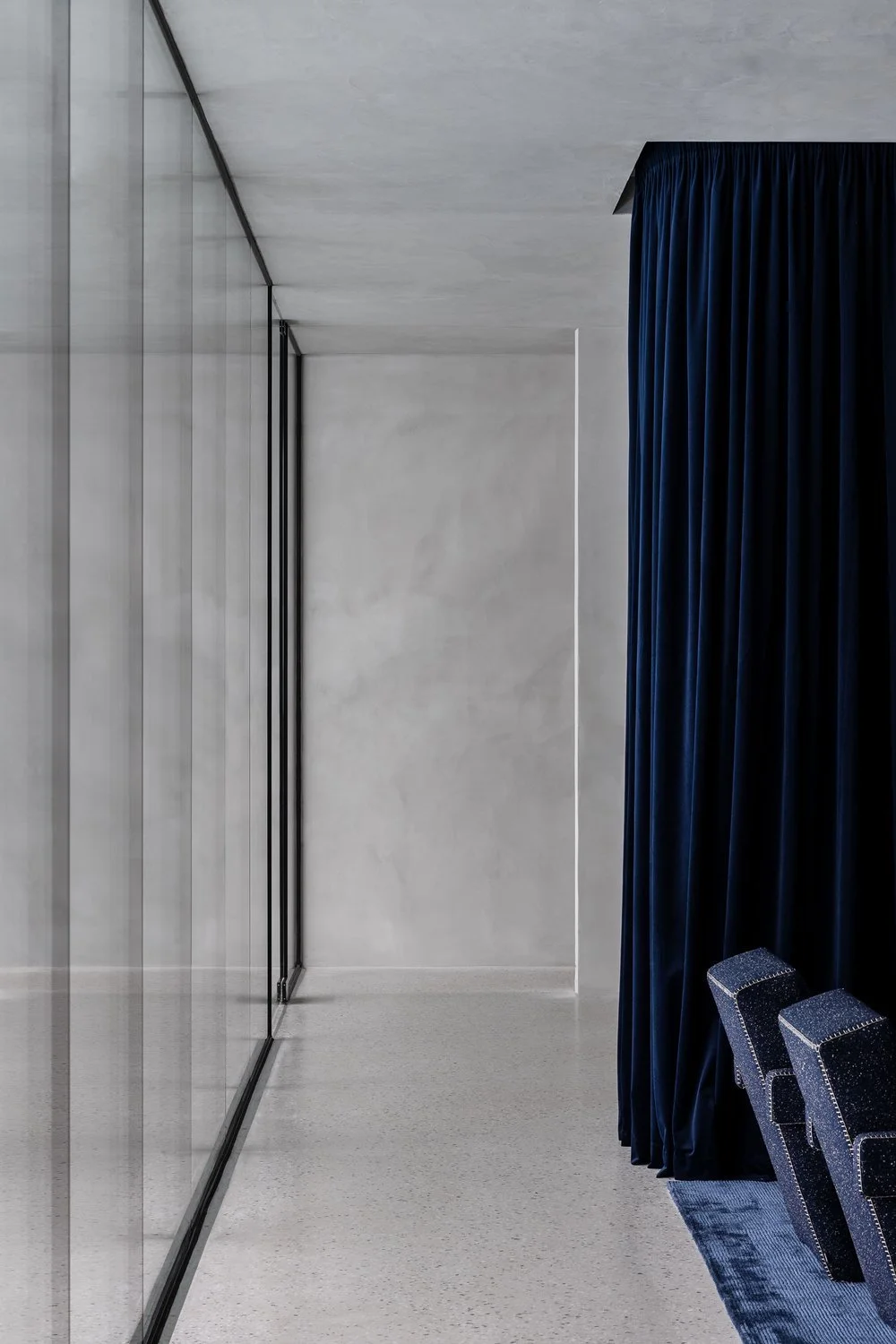Your Ultimate Guide To Microcement
Microcement is fast becoming the go-to material for sleek, modern interiors and exteriors. It combines cement and polymers to create a versatile and durable coating that can be applied to many surfaces. However, homeowners and professionals often have questions about its application process, cost, durability, and maintenance.
This comprehensive guide will provide in-depth answers to common questions about microcement. It will cover everything you need to know, including distinctions from traditional cement and other flooring materials, common applications, the installation process, cost-effectiveness, cleaning and maintenance requirements, and more.
Whether you're a homeowner considering microcement for your renovation project or a professional seeking detailed information, this guide is your go-to resource for understanding the key aspects of microcement.
General Questions About Microcement
What Is Microcement?
Microcement is a unique surfacing solution that combines cement and polymers to produce a versatile and highly durable coating. Typically applied at a thickness of approximately 2-3mm, microcement is used on a variety of surfaces such as floors, walls, and joinery to replicate the raw, industrial aesthetic of concrete.
How Is Microcement Different From Traditional Cement Or Other Flooring Materials?
Microcement differs from traditional cement and other flooring materials due to its unique application process and versatility. While traditional cement is typically used in thick layers and requires significant preparation and curing time, microcement is hand-trowelled over an existing substrate. This provides streamlined installation, eliminating the need to demolish or remove the existing flooring.
What Are The Common Applications Of Microcement?
Microcement is widely used for floors and walls because of its durability and attractive appearance. Advanced products like X-Bond microcement have significantly expanded installation possibilities. X-Bond microcement can be installed onto joinery for an added layer of protection and a modern aesthetic. Microcement can also be used in wet areas such as swimming pools, showers, saunas, and steam rooms, ensuring longevity and easy maintenance.
The versatility of microcement isn't limited to just internal applications. It can also be used externally, particularly for patios, pool surrounds, and outdoor kitchens.
How Durable Is Microcement, And What Kind Of Maintenance Does It Require?
Microcement's durability is similar to that of a traditional timber floorboard. Just like timber, microcement is designed to withstand the test of time, remaining robust even after years of use. To keep your microcement surface in optimum condition, it should be vacuumed/mopped on a regular basis to prevent the build-up of dust, dirt, and grime.
One of the standout features of microcement is its seamless finish, particularly when it’s installed in areas like bathrooms and showers. Unlike traditional tiles, which have grout lines that can become a breeding ground for mould and mildew, microcement has a smooth, continuous surface. This means it’s not just easier but also quicker to clean.
Can Microcement Be Used For Both Interior And Exterior Surfaces?
Microcement works indoors and outdoors, but the key to success lies in using the right sealer. The sealer needs to be suitable for external use to ensure durability and longevity. However, X-Bond microcement itself is specifically designed to be resilient and durable. It stands up against the elements when used on exterior surfaces and maintains its finish and quality even when subjected to high traffic or indoor usage.
What Is The Installation Process Of Microcement?
Installation of microcement varies depending on the substrate it is applied over. More prep work is involved when applying to tiles than over concrete. With a concrete application, the concrete would first need to be lightly ground, followed by a base coat, then the microcement coat, and then the sealer. Each brand of microcement has different installation processes. X-Bond is becoming increasingly popular thanks to its quick and easy installation process. It can typically be installed within 4 days (for a 100m2 project over concrete).
Cost And Affordability
Is Microcement More Cost-Effective Than Tiling?
The cost comparison between microcement and tiling is largely dependent on the type of tiles you opt for. Tiles come in various prices, ranging from very affordable to premium, high-end options. Assuming you are considering a mid to high-end range of tiles, the cost comparison tends to be fairly similar. Microcement application is a specialised process requiring a high level of skill and expertise, including labour costs. It’s carried out by skilled craftsmen, so when you receive a quote for microcement installation, it encompasses both the cost of materials and the craftsman's time, and some may charge a premium for their service.
How Much Is Microcement Per M2?
The cost of installing microcement typically starts at 180 + GST per square metre. However, the price can vary significantly depending on several factors. The size of the project is one such factor, with larger projects being more cost-effective per square metre. The type of substrate over which the microcement is installed also affects the cost. For instance, installing microcement over tiles is more expensive than over concrete due to the additional preparation work involved. Other factors that influence the cost include the project's location, the application area, and the job's intricacy.
How Much Does A Microcement Bathroom Cost?
Determining the exact cost of a microcement bathroom is quite complex due to numerous factors that come into play. Key considerations include the type of substrate the microcement will be installed over, the total square metre coverage of the bathroom, and whether the microcement application is intended for both the floors and walls. These variables significantly influence the overall pricing, making it difficult to provide a one-size-fits-all estimate. For a precise quote, it's best to consult with a professional who can provide a tailored price.
Installation And Application
Is It Possible To Apply Microcement Myself?
While some types of microcement can be purchased and applied by individuals, X-Bond microcement is exclusively sold to trained professionals to ensure quality standards and correct application.
Can Microcement Be Used As Grout?
Microcement cannot be used as grout. Its properties and purpose differ significantly from those of grout, which is designed to fill gaps and seal joints between tiles.
Can Microcement Go Over Tiles?
Yes, it is possible! Not all types of microcement can be applied directly over tiles, but X-Bond microcement can be. It provides a sleek, seamless, and modern finish without the need for grout. This makes X-Bond an excellent choice for remodelling projects that involve outdated tiles, as it saves both time and money by eliminating the need for tile removal and disposal.
Do You Need To Plaster Before Microcement?
Yes, it is necessary to apply plaster before microcement if you are planning to use it on a wall. This crucial step ensures that the microcement has a smooth and stable base to attach to, which is fundamental for its correct application and performance. Applying the plaster first helps to level out any imperfections in the wall, providing a uniform surface for the microcement. This not only enhances the appearance of the finished product but also extends its longevity by preventing potential issues such as cracking or peeling.
Can Microcement Be Applied Using A Roller?
While some may consider using a roller for the application of microcement, it is not the recommended method. The generally accepted and preferred method of application is by using a hand trowel. The use of a roller can cause uneven application and inconsistencies in the final appearance of the surface. On the other hand, a hand trowel allows for a more precise and controlled application of the microcement, ensuring an even and smooth finish.
Is Microcement Hard To Apply?
Applying microcement is a complex process, typically handled by professionals with extensive experience working with it. The intricate nature of the job requires professional expertise to ensure a quality finish and prevent potential issues.
Durability And Lifespan
Does Microcement Crack Easily?
Microcement usually follows the existing substrate, meaning that cracks in the concrete slab beneath the microcement may manifest as hairline cracks on the microcement’s surface. To minimise the cracking risk, choosing a high-quality microcement is important. X-Bond microcement incorporates a latex polymer into its mixture, providing flexibility to accommodate substrate movement to reduce the likelihood of hairline cracks. To enhance this crack-resistant feature, SEMCO Liquid Membrane can be applied as a preparatory layer before the X-Bond installation. This proactive approach serves as a preventive measure against crack formation, particularly when X-Bond microcement is applied over substrates that are prone to cracking.
What Is The Lifespan Of Microcement?
The lifespan of microcement can vary and is largely dependent on several factors, including the area of application, the amount of traffic it experiences, and the quality of maintenance it receives. For instance, high-traffic areas such as commercial premises may wear down more quickly than residential spaces with less footfall. However, with proper care and maintenance, microcement can last many years. It is a durable material known for resisting impact, scratches, and stains. Be sure to follow the appropriate cleaning and maintenance procedures to ensure it retains its aesthetic appeal and functionality over time.
Comparisons And Differences
What Is The Difference Between Micro Cement And Epoxy?
Microcement and epoxy are versatile materials used in construction but differ significantly in their properties and applications. Epoxy is a type of resin typically used for flooring in commercial and industrial settings due to its durability and resistance to wear. It gives a uniform, single-colour finish that resembles paint. On the other hand, microcement is a cement-based overlay system manually applied with a trowel. It can be used on floors, walls, and joinery, providing a sleek, contemporary concrete-like finish.
What Is The Difference Between Microcement And Normal Cement?
Microcement differs significantly from normal cement in many ways. While traditional cement is typically installed in a thick layer, like a concrete slab, microcement is designed to be a thin coating with an installation thickness of around 3mm. This significant reduction in thickness is achieved by including additional ingredients in the microcement mix, which reduces its density and provides it with greater flexibility than its traditional counterpart. This flexibility allows for more versatile application and durability over time.
What Are The Advantages Of Microcement?
It enables you to achieve the sleek, modern appearance of concrete without the need for pouring an actual concrete slab.
It can be applied at a minimal thickness of just 3mm and is exceptionally lightweight, making it a highly flexible solution for various design needs.
It can be installed on floors, walls and joinery, making it versatile for home and commercial spaces.
It’s suitable for both internal and external floors.
It’s available in different colours and finishes, accommodating a wide range of style preferences.
It allows for a modern, seamless aesthetic. Its smooth, continuous surface provides a clean, minimalistic look that is perfect for contemporary spaces.
Maintenance And Cleanliness
Does Microcement Go Mouldy?
Microcement, like any other surface, can develop mould depending on the level of maintenance and ventilation in the space. Mould typically thrives in damp and poorly ventilated areas. Therefore, regular cleaning and ensuring a well-ventilated environment can help prevent mould growth on a microcement surface.
Is Microcement Really Waterproof?
Although microcement is known for its durability and versatility, it is not inherently waterproof. It is applied as a topping over a waterproof membrane to ensure the surface remains dry and water-resistant. This makes microcement an excellent choice for areas frequently exposed to water or moisture, such as bathrooms, kitchens, and outdoor areas.
Is Microcement Hard To Clean?
Microcement is not difficult to clean due to its seamless surface. Unlike tiles or other surfaces that have grout lines where dirt and grime can accumulate, microcement provides a smooth and continuous surface that is easy to sweep or mop. For regular cleaning, a simple combination of water and a mild detergent will suffice. For tougher stains or spills, a non-abrasive cleaner can be used.
Specific Applications
Can Microcement Be Used In The Shower?
Yes, X-Bond microcement is suitable for use in showers. It's a versatile material that can adapt to any space, including wet areas. However, it's important to note that not all types of microcement can be used in showers. Always consult with your supplier or contractor to ensure your chosen product is appropriate for your intended use.
Is Microcement Good For Kitchen Worktops?
Microcement can certainly be installed on kitchen worktops. It offers a sleek, modern look and is available in various colours and finishes. However, it's crucial to remember that hot oils could stain microcement if not cleaned up promptly. Therefore, it's often more popular for island benches where heavy kitchen prep doesn't occur.
Can Microcement Be Used As A Splashback?
Microcement can be used as a splashback, adding a stylish and contemporary touch to any kitchen. However, it's not recommended for use behind a stove due to the risk of staining from hot oils.
Can Microcement Go On Plasterboard?
Yes, microcement can be applied directly onto the plasterboard. This makes it a versatile and easy-to-install option for many home renovations or building projects. It's important to ensure the plasterboard is prepared correctly to achieve the best possible adhesion and finish.
Is Microcement Good For Dogs?
Microcement is a great choice for pets. It's durable, easy to clean, and resistant to scratches, making it ideal for homes with dogs. It provides a smooth surface that's comfortable for pets to walk on while still being hard-wearing.
Is Microcement Slippery?
It is essential to verify the slip ratings of the microcement you select for your flooring needs. X-Bond microcement is an excellent choice as it complies with the slip resistance guidelines for both commercial and residential flooring. However, it's important to note that the slip resistance of X-Bond largely depends on its installation process and the type of sealer used.
Compatibility And Sealing
Does Microcement Need To Be Sealed?
Yes, microcement does need to be sealed following its application. The type of sealer used will vary depending on the specific location and usage of the microcement. X-Bond microcement offers two different sealing options. The first is a surface-mounting sealer known as Satin Stone, which gives a smooth and polished finish. The second is a penetrating sealer, known as Natural Shield, which penetrates deeper into the microcement to provide a more durable and long-lasting finish.
The choice between these two sealers is generally determined by whether the microcement is being used internally or externally or in areas with high moisture, such as showers.
Do You Need To Waterproof Before Microcement?
Before applying microcement, it is crucial to ensure that the area is adequately waterproofed. This is not only to protect the integrity of the microcement but also to comply with Australian Standards.
Proper waterproofing serves as a barrier, preventing any potential water damage that could weaken the microcement over time. Particularly in areas with high moisture exposure, such as bathrooms or outdoor areas, comprehensive waterproofing before microcement application is essential to maintain the durability and longevity of the finish.
Miscellaneous
Is Microcement Popular In Australia?
Yes, microcement has become increasingly popular over the years. X-Bond microcement was one of the first microcements of its kind in Australia, developed in the USA in 1991. We brought it to the market in 1999, when it was first installed by Alternative Surfaces. It has since been installed in projects throughout Australia over the past 25 years. The trend towards microcement is evident in the increasing number of specifications for its use in various projects.
What Is The Best Base For Microcement?
The ideal base for microcement largely depends on the specific product. X-Bond microcement, for instance, is notably versatile and can be installed over a wide range of materials. These include concrete, tiles, compressed sheeting, plaster, villaboard, blueboard MDF, ply, brickwork, and even foam. This wide range of compatible substrates makes it a flexible choice for various projects, contributing to its growing popularity.





